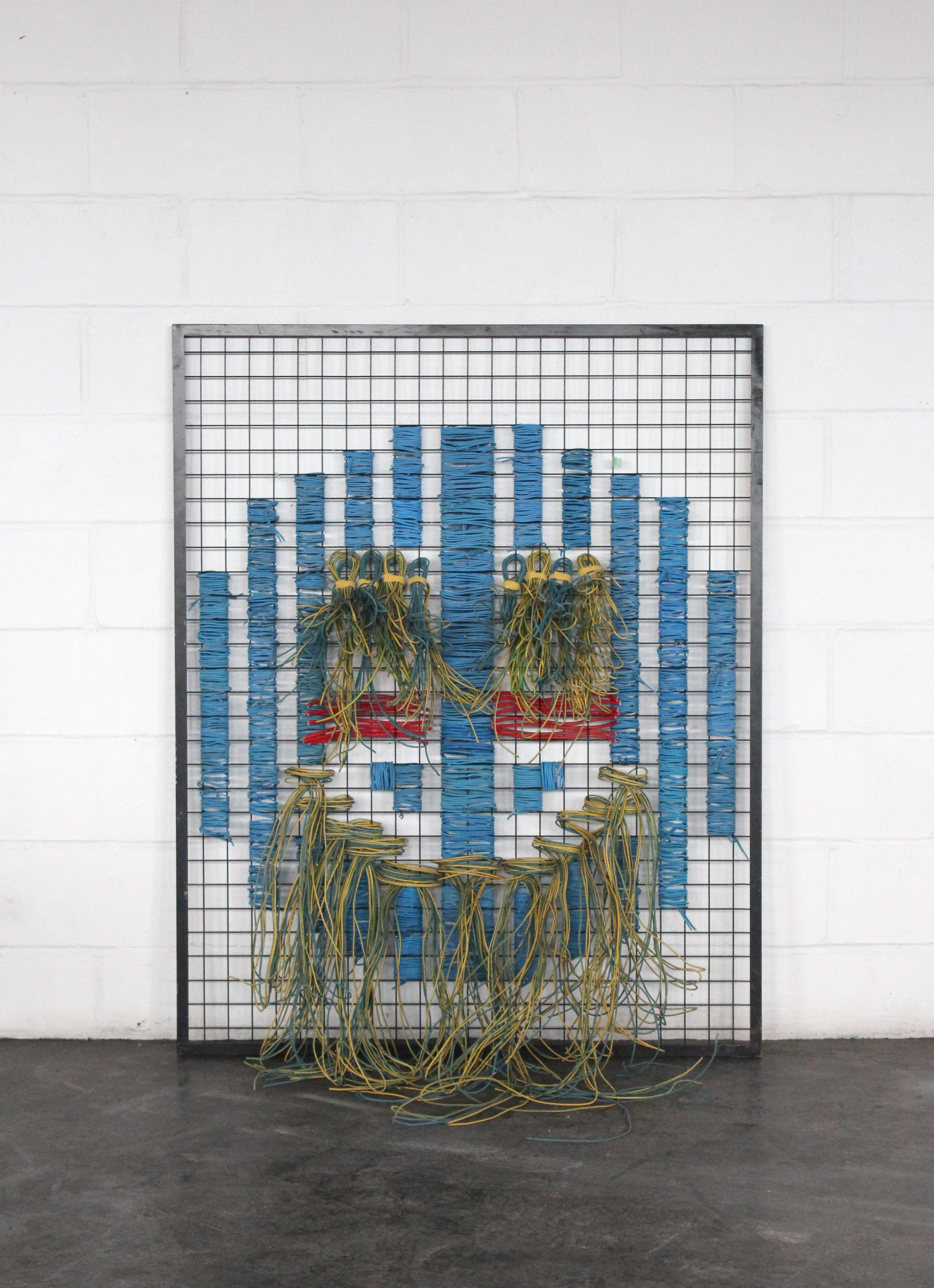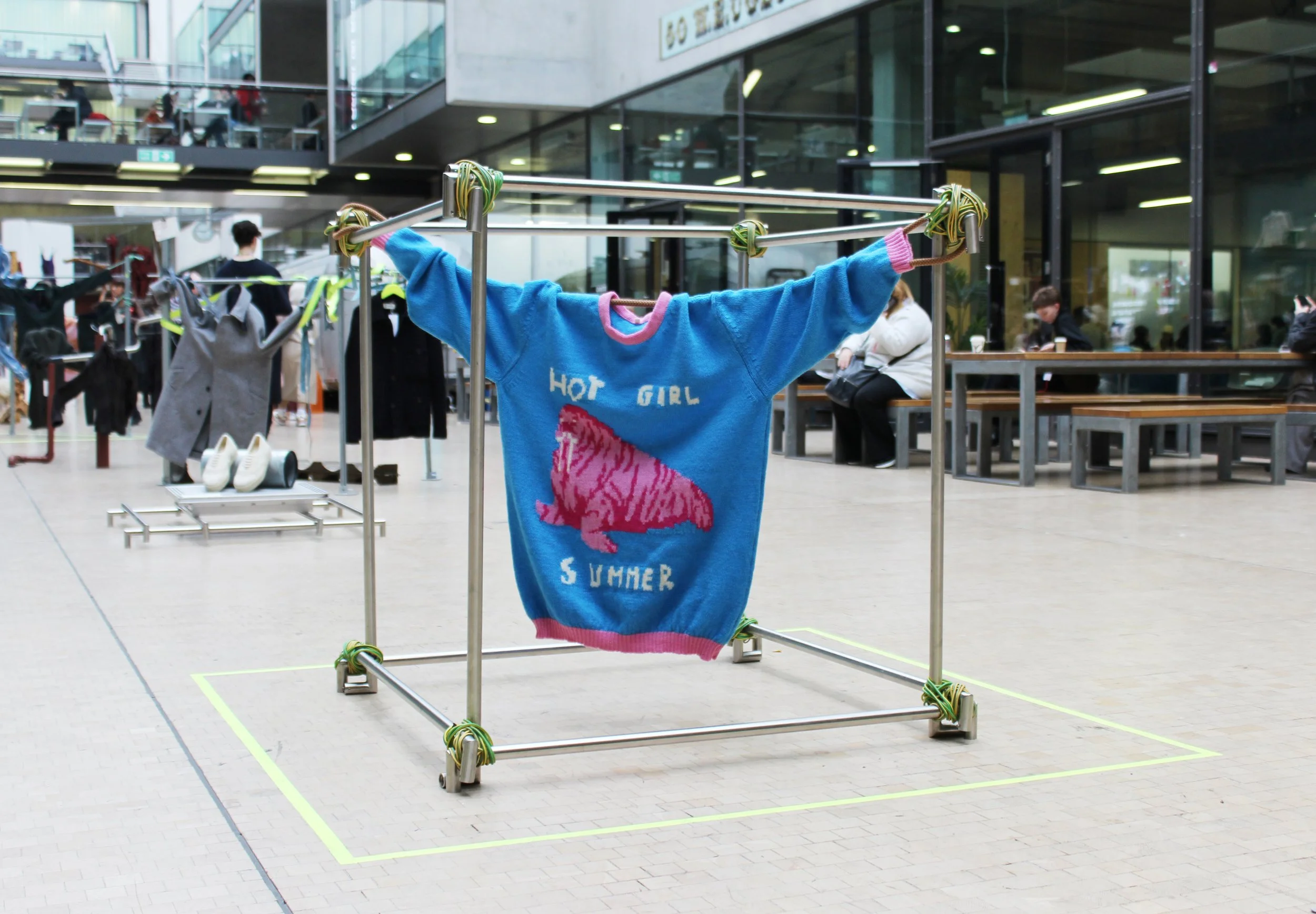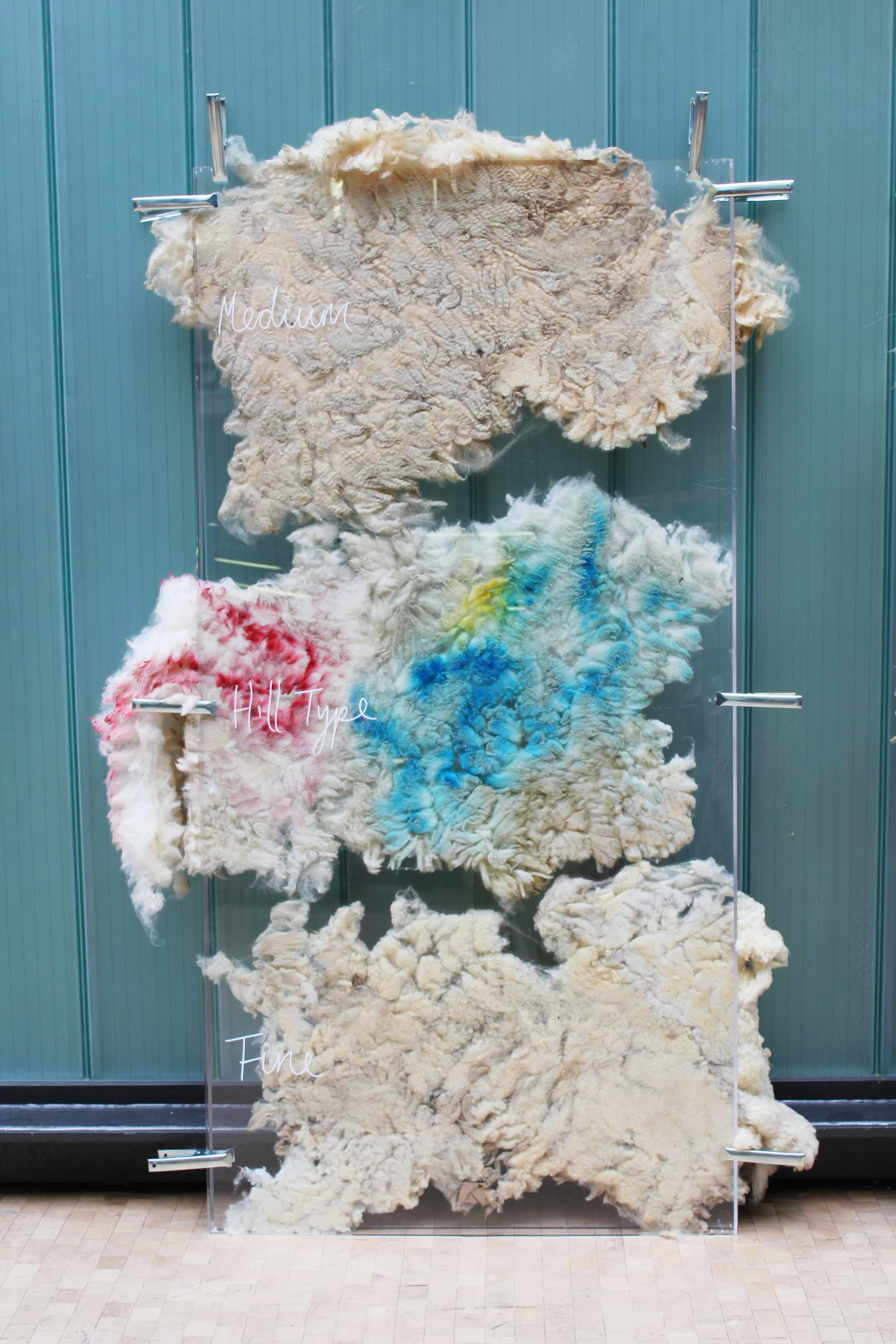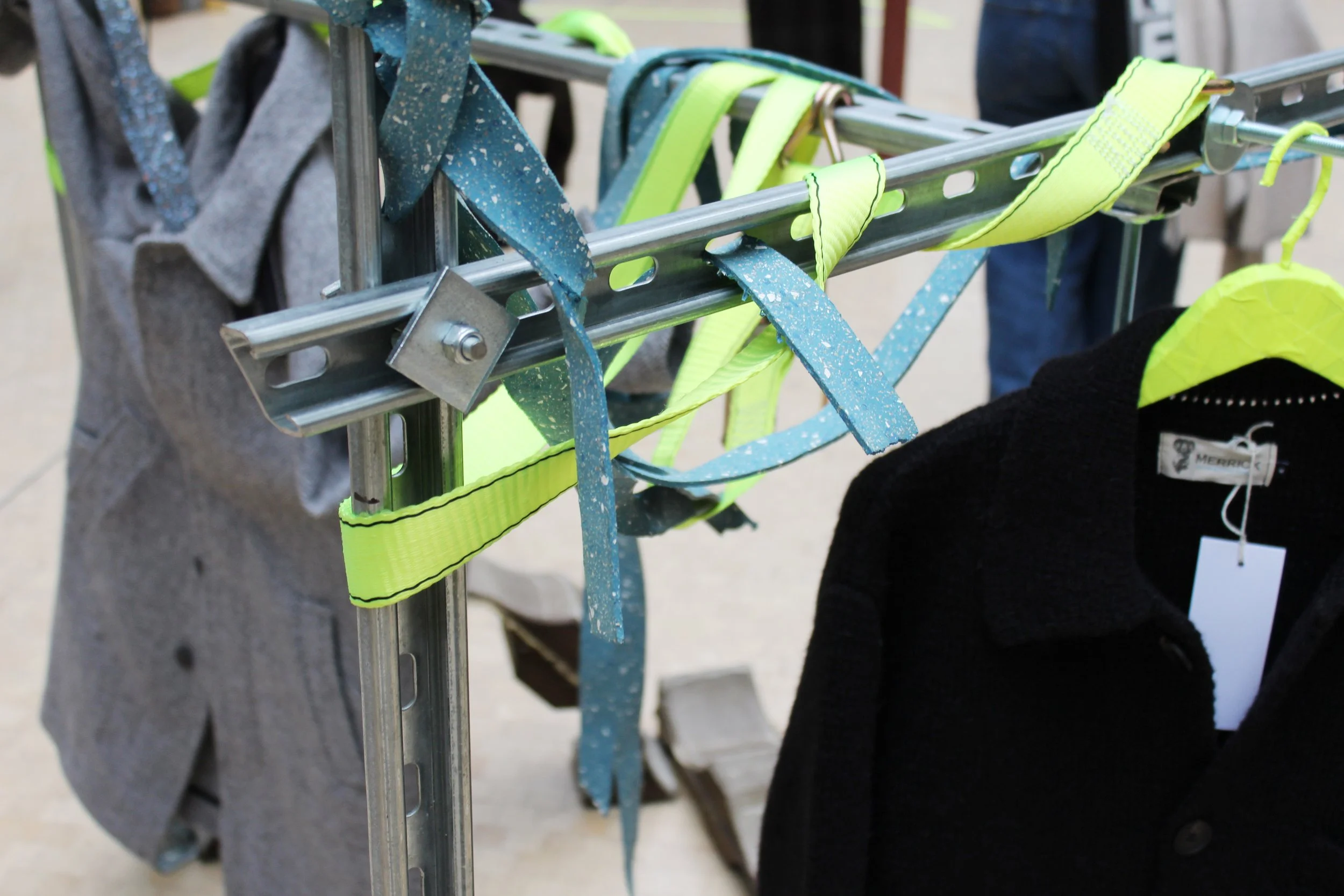Interview with Studio TIP
As covered in our recent London Design Festival article Purposely Repurposing, Studio TIP is a new initiative set up by design-duo Charlotte Kidger and Katie-May Boyd, who are intent on tackling construction waste by transforming it back into useful materials. In principle, that sounds simple enough, but the very fact that this is a relatively novel idea suggests that in reality, it’s harder than we’d like it to be. I couldn’t resist finding out more about how the pair have gone about setting up the studio and how they’re making it work - although a cursory glance at their individual CV’s goes some way in explaining how their combined skills are already making an impact.
Both come from textile backgrounds; Charlotte's BA Printed Textiles & Surface Pattern at Leeds Collage of Art and Katie-May's Costume for Performance at London College of Fashion. Their work experiences post-BA include CMF design for Colour Hive, costumery at Madame Tussauds, and CMF Strategist at Seymourpowell. However, it was during their studies on the MA Material Futures at Central Saint Martins in 2018 that they met and began to forge their shared sensibilities, not least a passion for sustainable design practices and the circular economy. In the short space of time since they launched Studio TIP, they have already worked closely with the likes of Elliot Wood, Dulwich Picture Gallery, British Wool and Central Saint Martins, as well as recent collaborations with Material Store, Renee Materials and Yodomo.
It’s these kinds of cross-pollinatory practices that I find particularly exciting and hopeful, although I started the conversation with a focus on the pair themselves and how the studio has grown between them.
JB: I’m always interested in partnerships - how they have come together and work – and am aware that you’ve both come from your own individual practices. Can you tell me about how and why things got started?
CK: We’ve been best friends since the MA and both did our final major projects looking at waste plastics, myself Polyurethane Foam and Katie Expanded Polystyrene. My project came from a craft perspective and Katie's from a systems-based perspective. I think our shared interest in materials and the combined knowledge of both the craft and system sides of projects helped cultivate what TIP means to us today. Before TIP we were both very successful in our current roles in past practices and jobs however both kept coming back to the idea of setting up a studio together. The environmental and design challenges we both researched during our MA had only seemed to grow stronger in the 6 years since we graduated and we both wanted more public-facing, collaborative roles, so it only made sense to set up our own thing. At the end of 2023 we were on a hiking holiday together in Tenerife and mid hike said to each other “Shall we actually make this happen?” We brainstormed the studio for the rest of the walk then 3 months later incorporated as Studio TIP CIC.
JB: It’s a great combination of skills and passion, so I’m super intrigued to know how you share roles, as well as what your working space (and life) is like at this early stage of your studio progression.
CK: We’ve been asked this a lot now and we both tend to look at each other and both say we both do it all! We’ve separately been in industry for over 10 years so have equal experience wearing all the hats!
We have an amazing temporary space at The Loop in Hackney Wick, it houses lots of other practices all working within the Circular Economy and has a big open space for when we do installation builds and for storing lots of industrial materials. We also have a hot desking and access to workshops at Makerversity at Somerset House - we’re extremely grateful to be part of two amazing design communities. We tend to be onsite a lot of the time too - mostly in hard hats and a hi-vis visiting construction sites or traveling to see factories up and down the country sourcing materials.
We are extremely grateful to Grant and William from Material Matters for supporting us with our first installation and official launch at Material Matters this year. They had confidence in us as a new studio and provided breathing room for our launch.
JB: Your mentioning of the circular economy brings me to the nuts and bolts of what the studio does with waste. Although, the sheer volume of unused construction material generated here in the UK and beyond suggests that there is a systemic problem with how we handle - and perhaps label it - as waste. What has people’s reaction to the project been so far?
KMB: The volume of waste in this sector is truly shocking once you start wrapping your head around it. Last year DEFRA reported construction, demolition and excavation as generating 62 per cent of UK waste in 2019. All this waste exists in a system that hugely devalues materials once they’ve been used, and the work we’re doing is trying to challenge that. The reaction to the TIP TAKES project has been inspiring because people from all over the creative industries have a different experience of materials and the project has sparked so many ideas.
JB: Is it fair to say that transforming such waste into useful materials - along with the collective perception of this process - requires a lot of collaboration?
CK: Absolutely. The process of working with waste requires a backwards methodology. It’s one that we really enjoy and find challenging, however sometimes appears tricky for clients to warm to as quickly. Collaboration therefore starts at the very beginning of our process with a client, we need their trust and enthusiasm behind our vision as quite often the outcome is bespoke and unique to every project. We then have several stakeholders we constantly collaborate with on sourcing materials. We’ll create a material palette and then send this round to see what’s available at various sites. There is then a collaborative approach between let’s say a project manager, site manager and the laborers on site. Geordie Daltrey from J F Hunt has been amazing to us, he set up a reuse initiative this summer inviting artists and designers to a site in Piccadilly to take materials that had slipped through the net within material audits. This is very much what sparked our interest and launched TIP Takes.
Collaboration is one of TIP's key values. We’re one of many creative studios and dots within the Circular Economy bubble currently in London and we’re working closely with everyone to strengthen and deepen the work that we can do. The end of this year for us is all about building on our network and planning collaborations for 2025.
KMB: Adding a note on collaboration. So far what we’ve learned is that it’s not just part of the process, it is the process. The linear system that industry has developed since the Industrial Revolution has meant that collaborative work has been lost to a certain extent, which is also why it can sometimes feel very difficult, against the grain, but we have to learn how to collaborate again if reuse and the circular practices are going to work.
JB: The Material Passports strike me as such a wonderful idea, can you go into a little detail about how you draw these up and what information people can expect from them?
KMB: Material Passports are a key part of the circular economy, in order to track materials and retain key information so they can be reused to their highest function. We created our passports based on the extensive research carried out by Orms Architecture and Lancaster University, which sets out a standard for material passports in the construction industry. In addition to this information, we wanted our passports to tell a visual narrative of the materials, so each passport has visuals of the materials in situ, deconstructed, and re-used again. Early next year we will be collecting information of where all the items went next and these will be added to the passports, tracking their many creative lives.
JB: Are you able to share a little insight into who is using the materials you have processed thus far, and the type of projects they’re going back into?
CK: As you know, during the Material Matters event at LDF, we asked people to share their creative vision for the materials in exchange for taking them away, and it was amazing to hear the breadth of uses people had in mind - from DIY projects to architectural lighting institutions. So far we know that the materials have been used to renovate an allotment shed in Nunhead, bathroom shelves in a bank, an engine-cover-turned-light-fixure and a banister to a treehouse toilet. A full rundown will be in the report next year.
JB: Beyond the report itself, I’m aware of a a couple of other projects lined up that utilise materials in some interesting ways, can you tell me about those?
KMB: During Material Matters we found out that we have been shortlisted alongside our collaborators CRAB Architects for a permanent playable sculpture at Dulwich Picture Gallery. As part of the submission, we held a family free-play workshop at the gallery with some of the materials we collected around London. Our proposal is to use waste streams around London as ‘loose parts’ to co-design the sculpture with local families. This is a huge opportunity and we’re very excited to be in this second stage – there are 6 shortlisted teams out of about 150 applications.
In October we were also commissioned by Central Saint Martins to create an installation for an event with British Wool. We sourced materials from The Crown Estate, KPH, TFL and climbing gyms to create an industrial-inspired space to exhibit garments from leading British designers as well as the 2nd year knit students.
This article was first published by Design Insider.







